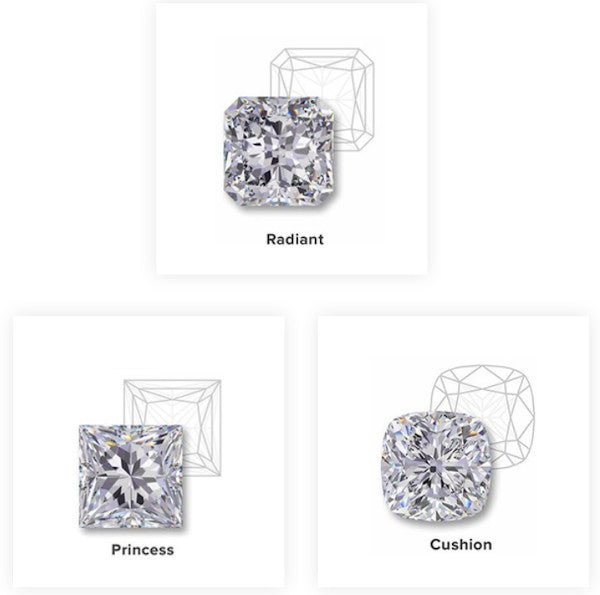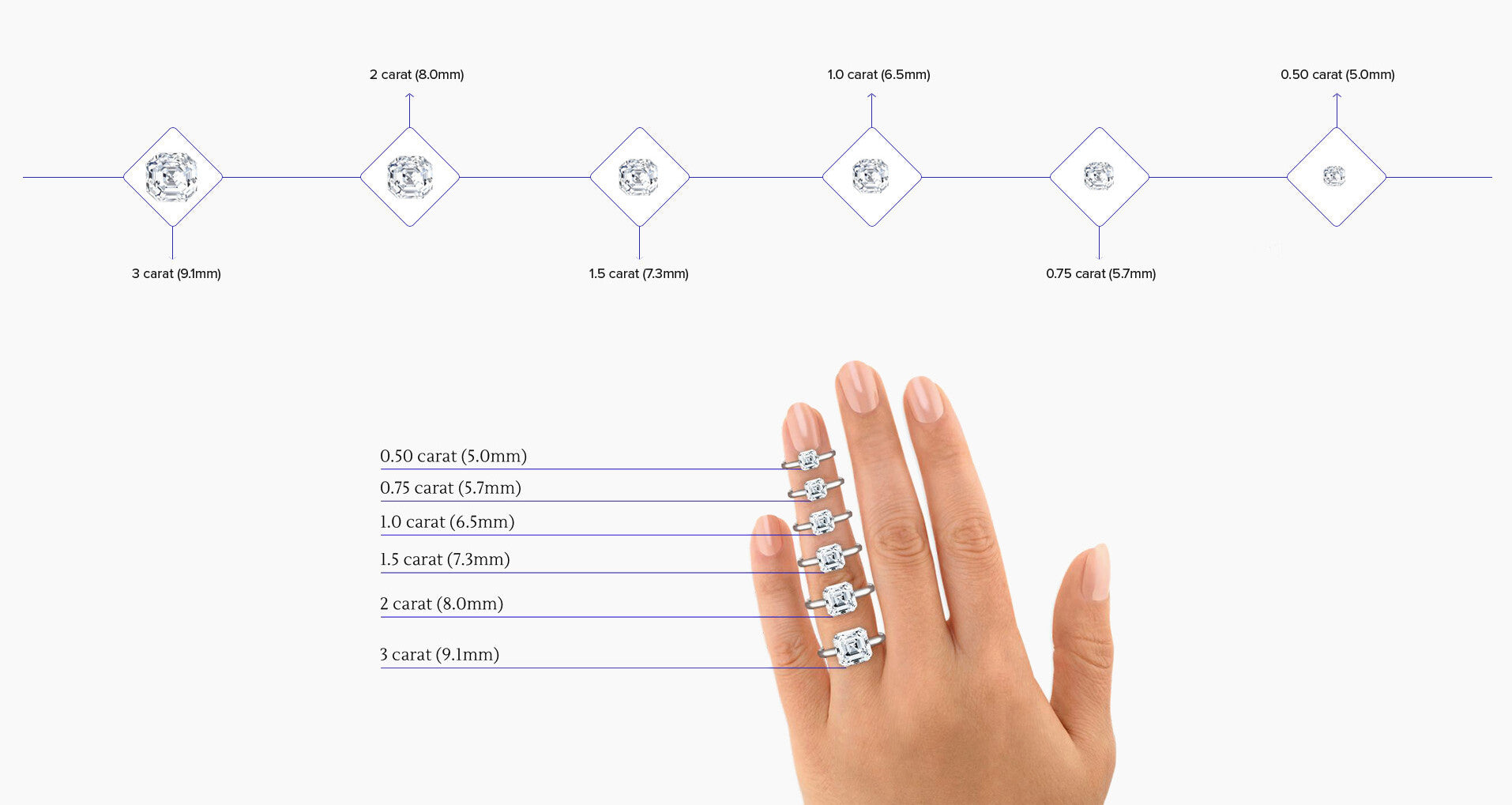
Love the octagonal shape of an emerald cut but also the sparkle of a round brilliant? Your diamond shape is the radiant cut! This innovative cross between those two more well-known diamond cuts lets you have your cake and eat it too. The radiant cut has straight sides, beveled corners and lots of brilliance. Rectangular or square, colorless or fancy color, radiant cut diamonds are a popular choice for a dazzling engagement ring.
The story of the radiant shape diamond begins in New York in the seventies with diamond cutter Henry Grossbard. Grossbard worked at the cutting wheel with real diamonds, adding facets one at a time to develop an octagonal diamond that had maximum brilliance.
Building on the work of Basil Watermeyer, the South African cutter who invented the Barion Cut, he added triangular pavilion main facets that meet a step cut facet below the girdle. His achievement was a cut that had the elongated rectangular shape of the emerald cut but with all the fire and sparkle of a round brilliant. With its 70 or 66 facets, the radiant is the most brilliant of the square-sided cuts.


Ready to buy a radiant? Because radiant diamonds are less common than round brilliants, many retailers won’t have any in stock. You are much better off buying fancy shapes like this online because you’ll have a much better selection in your target color, clarity and carat weight so you can assess the shape and cut quality and pick a really beautiful diamond that’s a good value too.
You’ll be able to select a better radiant shapw diamond if you buy it loose rather than already set into an engagement ring.
It’s important to rely only on diamond grading reports from GIA or AGS, the world’s most respected diamond grading laboratories. You can’t rely on the grades from other labs to be equivalent.

For almost two decades, the only radiant cuts you could buy were from Henry Grossbard. The patent has long expired so many cutters now produce versions of the radiant cut. On a GIA grading report, a radiant cut is called a "cut corner rectangular modified brilliant" or a "cut corner square modified brilliant."


Because of its cut corners and flat pavilion facets, radiant diamonds look larger than princess cut diamonds or round brilliant diamonds.
That means a two-carat radiant will look larger than a two-carat princess cut or round brilliant diamond. Only the oval cut looks as large. Look at the five two-carat diamonds below and see which shape looks the largest to you.

There’s something so crisp and modern about the straight edges of a radiant cut. It has excellent fire and brilliance and the facet pattern forms beautiful lines that emphasize the square shape.
The radiant cut has a “crushed ice” or “kaleidoscope” facet pattern, with many facets reflecting each other so it looks like there are even more flashing facets catching the eye.

Our customers’ favorite setting for radiant diamonds is a simple radiant diamond band engagement ring. Halo engagement rings are also popular because they make your radiant shape diamond look larger thanks to the frame of diamonds around it. The geometric style of a radiant cut goes well in a bezel-set solitaire engagement ring. In a radiant three stone engagement ring, our customers generally or tapered baguettes on the side.

ROSI generally recommends a color of G and clarity of VS2 for radiant diamonds. This will give you a diamond that looks colorless with no inclusions visible to the naked eye. The money you save can be invested in a larger size diamond and a better cut. ROSI recommends excellent symmetry and polish for a diamond that sparkles beautifully.
ROSI recommends radiant shape diamonds with a rectangular length to width ratio of 1.25 to 1.50.
A ratio of 1 would be a square and a ratio of 1.75 would be a long thin rectangle. Which you prefer is up to you: most people look for something in the middle.
Make sure you buy your loose radiant shape diamond from a company that demonstrates a commitment to responsible sourcing. Supporting the Kimberley Process is a great start but the best suppliers go beyond that, sourcing diamonds directly from sightholders and mines.

There’s one final step to making sure that you’ve found the right radiant shape diamond. Compare your diamond by entering the GIA report number into ROSI. In a few seconds, you’ll see if artificial intelligence can find you a better diamond value. You may find a higher-rated diamond at the same price or a similar stone for a lower price. If not and your diamond passes the A.I. Challenge, you know you are really getting a great deal.
